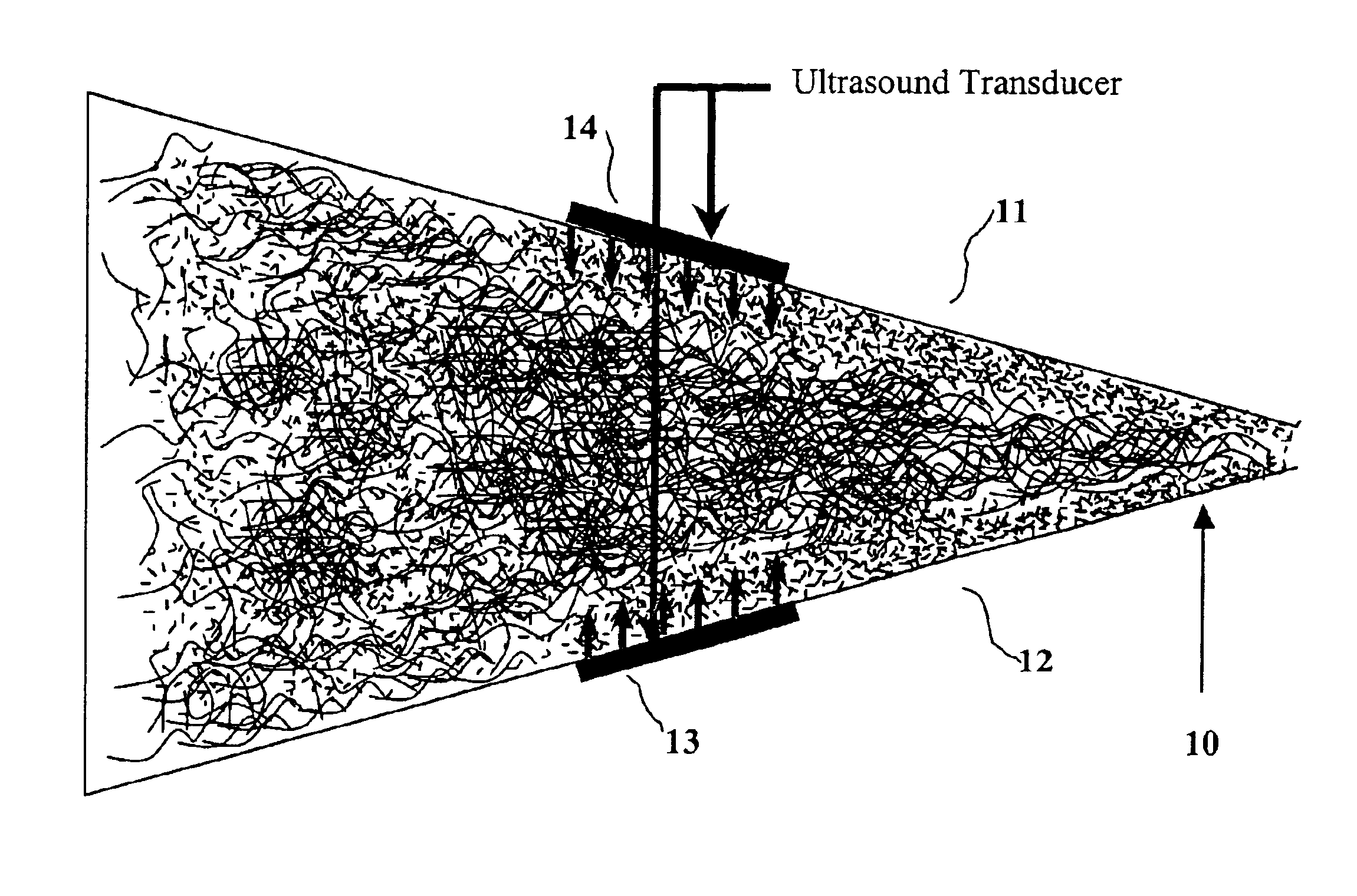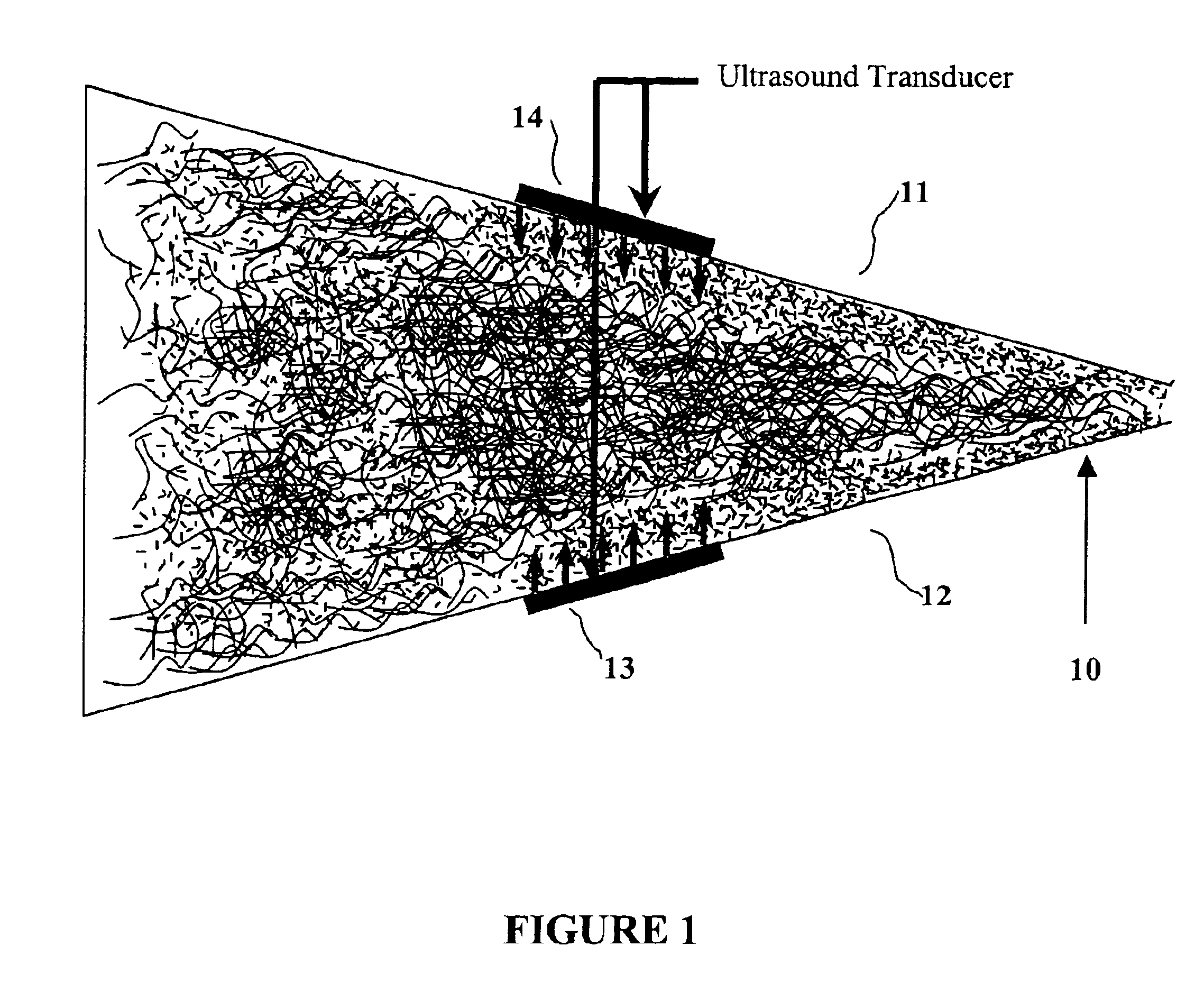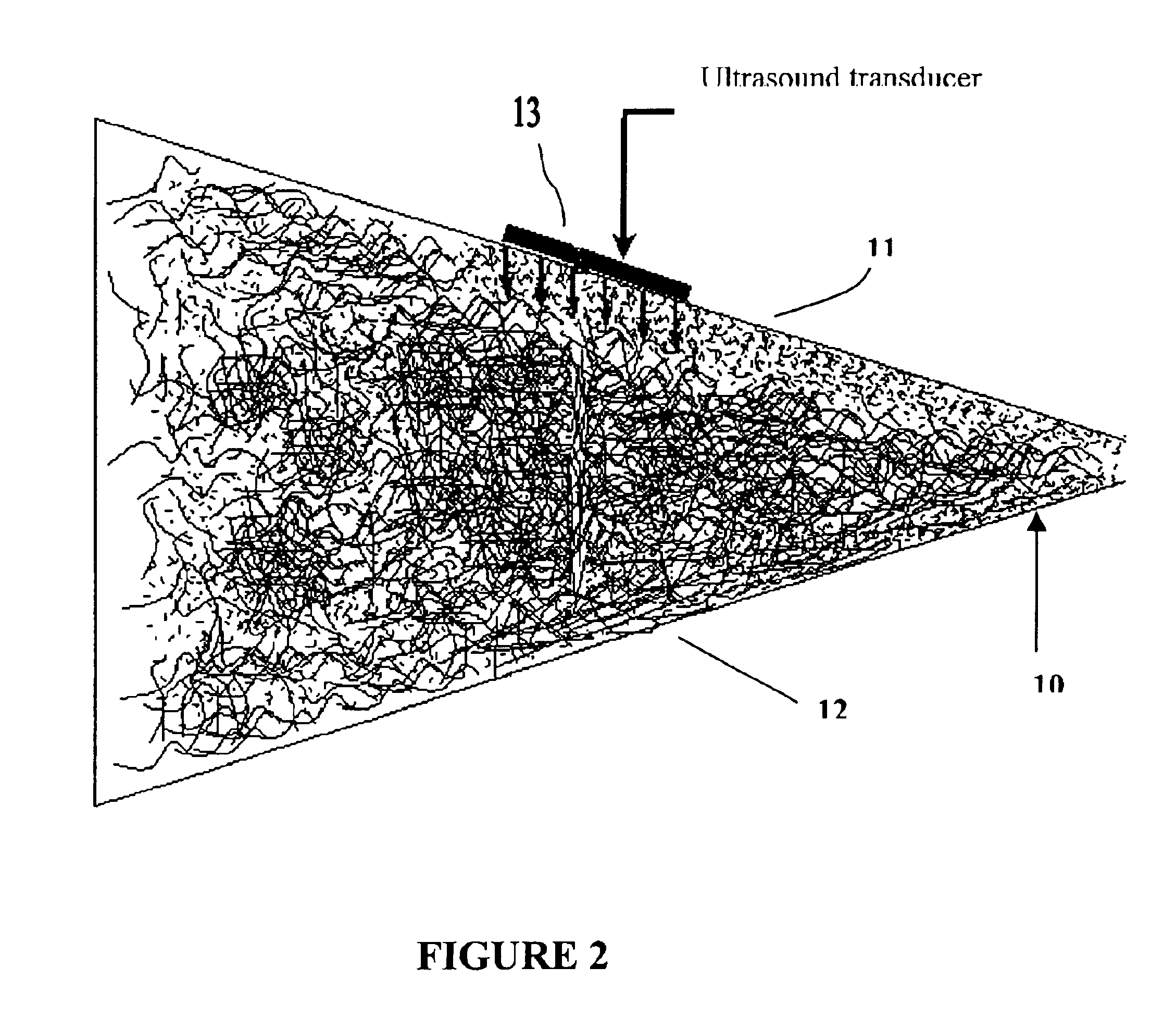Method of making a stratified paper
- Summary
- Abstract
- Description
- Claims
- Application Information
AI Technical Summary
Benefits of technology
Problems solved by technology
Method used
Image
Examples
example 1
Comparison of High Frequency and Low Frequency Transducers
[0053]Both high frequency (150 kHz) and low frequency (1.5 MHz) acoustic transducers were evaluated. Both high and low frequency transducers were systematically compared to determine the most effective frequency range of the acoustic transducer. As the result of the evaluation, the lower frequency (150 kHz) transducer showed significant stratification based on fiber length and diameter, while the higher frequency (1.5 MHz) transducer didn't show major stratification. Presently, only 150 kHz transducers were used. The result is summarized in FIGS. 3A-3C. As shown in FIGS. 3A-3C there is no difference between acoustic powers of 0 W and acoustic powers of 5 W. This indicates that the high frequency transducer is not effective for fiber suspension stratification and fractionation. This may be potentially due to the extremely high attenuation rate of the acoustic power in the flowing medium.
example 2
Visualization Study of Acoustic Stratification
[0054]The following conditions were used in this experiment: (1) Rectangular channel flow (5 cm×3 m); (2) High Speed Digital Imaging Device (records the dynamic events at 1000 frames per second); (3) Front lighting method (the light stands in front of camera but behind the visualized object). Flow velocity: 0.5 m / sec (about 100 feet / min); Consistency: 0.25-0.28%; Acoustic Power: 10 W / cm2.
[0055]As predicted, the acoustic radiation force acts selectively on certain types of fibers. As shown on FIG. 5B, there was no activity observed for 100% hardwood fibers. In contrast, 100% softwood fiber suspension was strongly deflected due to the acoustic force (FIG. 5C). The fiber stratification was observed for hardwood and softwood mixtures consisting of 70% softwood fiber and 30% hardwood fiber (FIG. 5D) and 30% softwood fiber and 70% hardwood fiber (FIG. 5E). The depth of the stratification depicted as the dotted line in FIGS. 5C and 5E is the cr...
example 3
[0058]Weight averaged fiber length were used as a parameter to evaluate the effectiveness of the stratification. Because the amount of long softwood fibers reduces under the acoustic radiation pressure, the overall average fiber length should decrease. In FIGS. 7 and 8 uses 70:30 (hardwood:softwood) mixtures, and the control has no acoustic power (feeding suspension). As shown in FIGS. 7 and 8, the average fiber length of the suspension collected under the acoustic radiation pressure was lower than the suspension without the acoustic pressure. This clearly indicated that the acoustic radiation pressure separates a considerable amount of long fibers from the incoming suspension. The result agrees with the visual observation.
PUM
 Login to View More
Login to View More Abstract
Description
Claims
Application Information
 Login to View More
Login to View More - R&D
- Intellectual Property
- Life Sciences
- Materials
- Tech Scout
- Unparalleled Data Quality
- Higher Quality Content
- 60% Fewer Hallucinations
Browse by: Latest US Patents, China's latest patents, Technical Efficacy Thesaurus, Application Domain, Technology Topic, Popular Technical Reports.
© 2025 PatSnap. All rights reserved.Legal|Privacy policy|Modern Slavery Act Transparency Statement|Sitemap|About US| Contact US: help@patsnap.com



